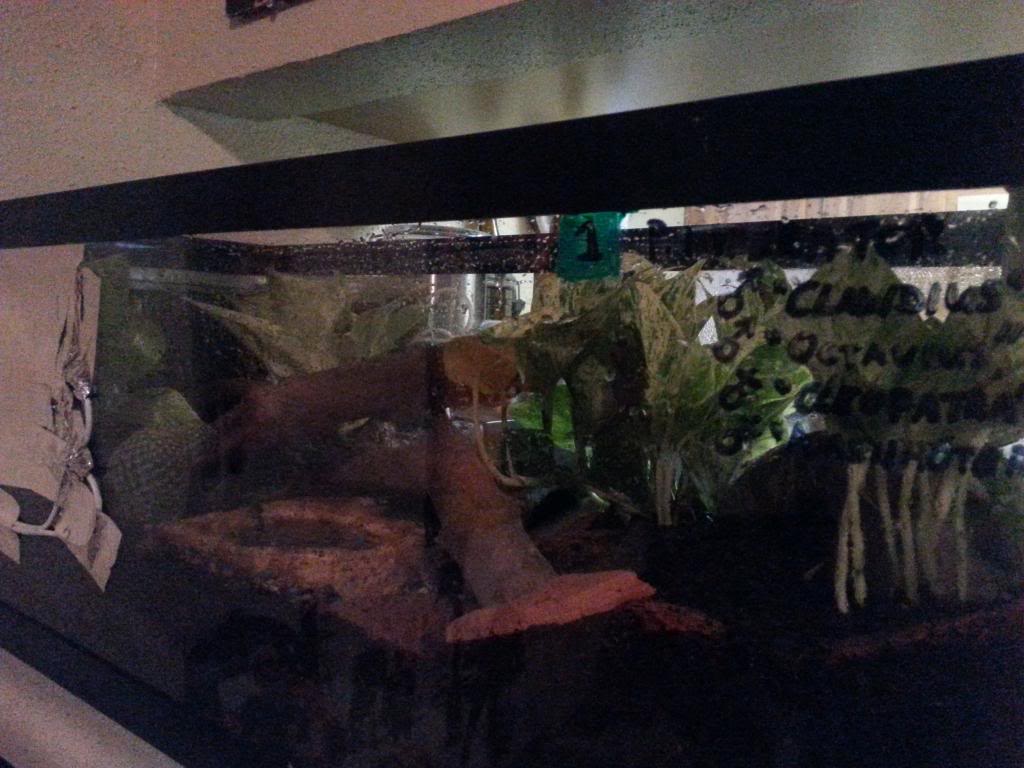Hey guys! I'm sure most of you know this or tricks similar to this, but in case you don't, or for any of our newbies out there, I wanted to share my setup for my P. imperators. With this enclosure, I haven't misted or watered in about 2 weeks and I'm still getting great rain forest humidity levels to the point where condensation is forming on the sides and top of the enclosure and it actually sort of rains inside and it gets a good water cycle. It's not so bad that it's smothering inside, though, and there is still a good heat gradient (90ish on the hot side to 80ish on the cool side).
What to use:
-A good glass enclosure. I'm using a 20g long aquarium that I picked up at PetsMart for 4 scorpions.
-Good, water holding substrate. I use a thick layer of organic humus on bottom with a thin (about 1") layer of premium topsoil on the top. Both are pesticide free, of course. The humus absorbs a great amount of water, but can get kinda muddy. The topsoil transfers the moisture from the humus up into the surface of the substrate and allows for the heat to evaporate it. It's also porous enough to let water seep back down into the humus.
-FlexWatt heat tape (can be a pain if you don't know how to solder or work with electrical stuff. I would imagine that a good quality heat mat would do the same thing.)
-Mesh lid covered almost completely in foil insulation tape.
-LIVE plants. I use barrel cactus and pothos. Both are good in low light situations and don't mind the humidity.
First, put down your humus. You need 4-6 inches or more in your deepest parts where you have your hides. Emps love to burrow. It can get thinner in some places, but don't go any thinner than about 3 inches. Set your landscape however you need to. I like a natural look, so I don't make it level all the way across. I put hills and stuff in there. Makes it more interesting. Also, emps also love to climb and explore, so if you give them hills and divots and stuff, they tend to move around more, I have noticed.
Next, pour your topsoil on top. It's good to have the same thickness of topsoil all across the whole thing so that the humidity is distributed a little more evenly, but it's not absolutely required. Just make sure to have this layer much thinner than the humus. An average of about 1" is sufficient. Pack it down, but not too hard. You want your scorps to be able to dig into it with ease, but don't want it to be so loose that it erodes too much when the moisture hits it.
Now, place your hides, plants and decorations. Remember to put many hides in there. At least on on the hot side, at least one on the cool and one about midway through the enclosure (if you have room). Branches (sterilized in an oven for a few hours) are great as, like I said earlier, these scorps love to explore. Live plants are essential to this setup. And a good amount of them. With the humidity we're talking about and the little amount of airflow going through the tank, the plants keep things from getting too stagnant. Air quality is important. Plants also allow more things for the scorps to climb on and hide in/behind. Water your substrate. Don't go overboard, but make sure the humus is pretty moist. Your topsoil will seem to dry out for a bit, but don't worry. Once your ecosystem is going, the humidity will transfer up through it and you will be golden. Also, make sure that there aren't any pools of standing water. We don't want it to be too soupy in there. Emps like it moist and rainy, but they don't like to swim. Lol.
Now, the heating. Take your flexwatt and apply it to one of the small sides of the enclosure. Wrap it around the entire side (see pictures below) so a sort of low temperature sauna is created on one end of the enclosure. This and the lid are the source of the humidity greatness in this setup. Use foil insulation tape to stick the heat tape to the side. Duct tape works, but doesn't insulate as well, so you don't get as good heat. Foil tape also adheres stronger than duct tape and isn't bothered as much by the heat.
Lastly, you have your lid. Use your foil tape and cover almost the entire lid. Make sure you do sticky side up, so the slick, foil side is on the inside of the lid. This allows a slick surface for the water to condense on so you get a really cool water cycle. It's so cool to look in there and see water dripping down like it's raining. It's like you have your own mini-rain forest in your living room. Make sure to leave a small part of the lid with only mesh and no foil tape so that you get SOME air flow. Make sure you put this ope part on the cool side of the tank, also, so that the heat stays on the hot side.
That's about it. Just make sure to mist the enclosure once or twice per day for the first couple days. If you have any questions or critiques, please feel free to comment or PM me. Here are pictures so you can see what I'm talking about.
Condensation on the side
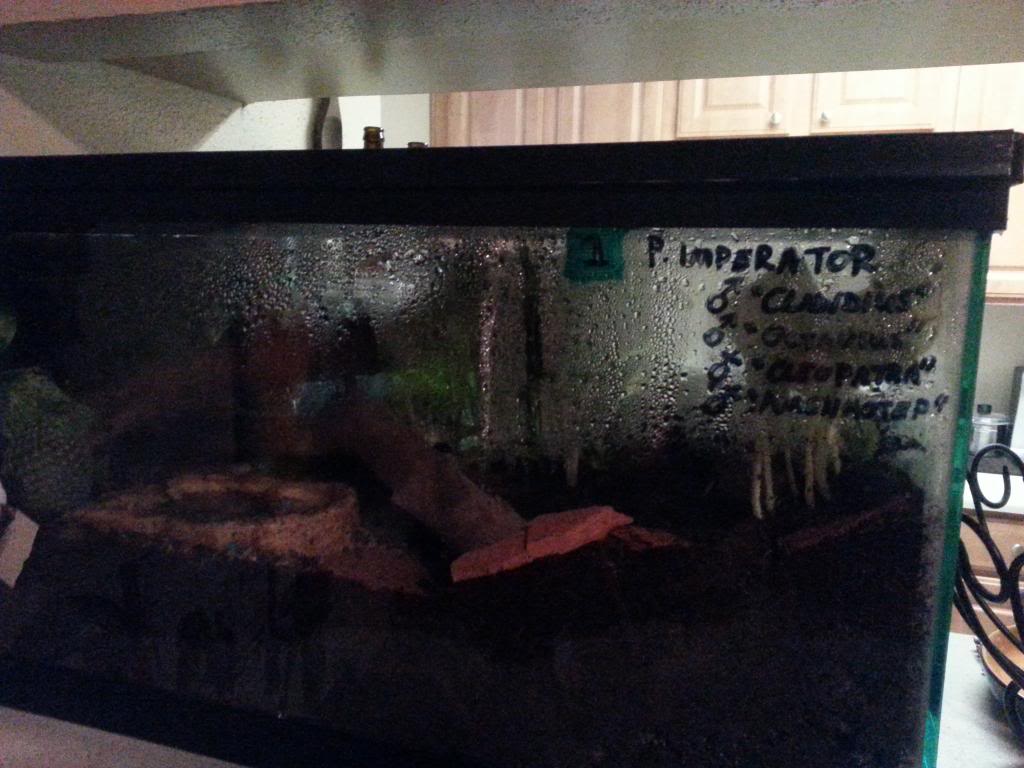
View of substrate. Lower layer of humus, top layer of topsoil. You can see the condensation goes down into the substrate, so you know it's not too dry.
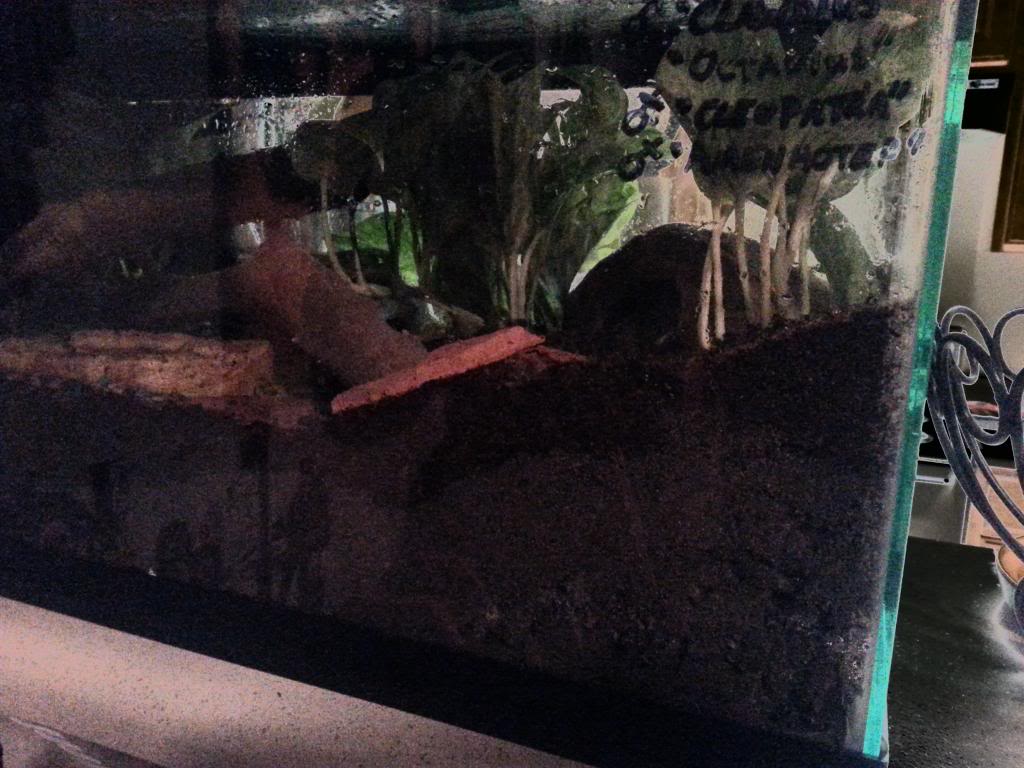
Flexwatt on one side of the enclosure, surrounding one whole section to create a low temp sauna-like effect
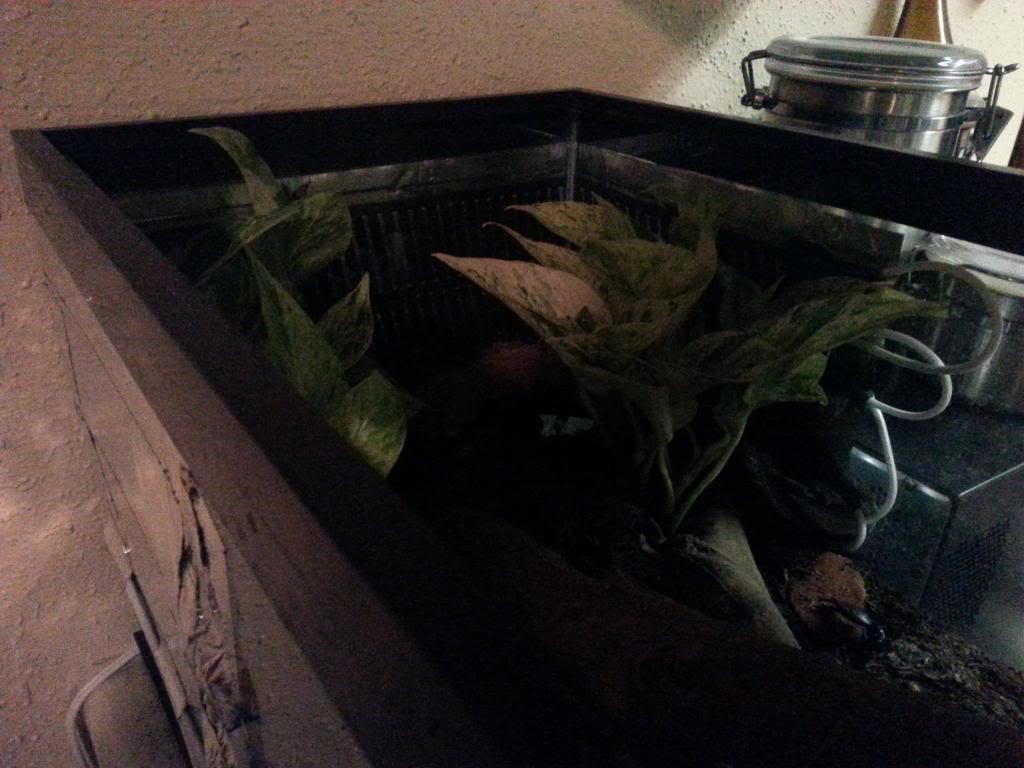
Lid covered in foil tape, slick side to the inside. You can see the condensation here that allows for the water cycle.
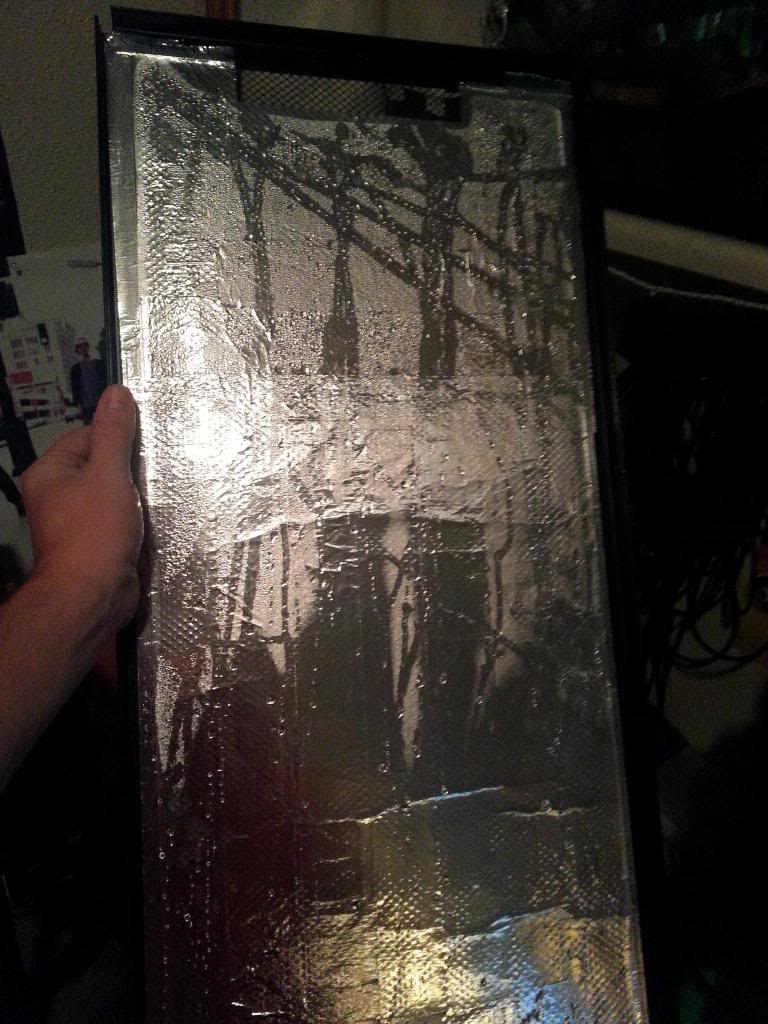
Lid vent. Make sure to put this open part on the cool side.
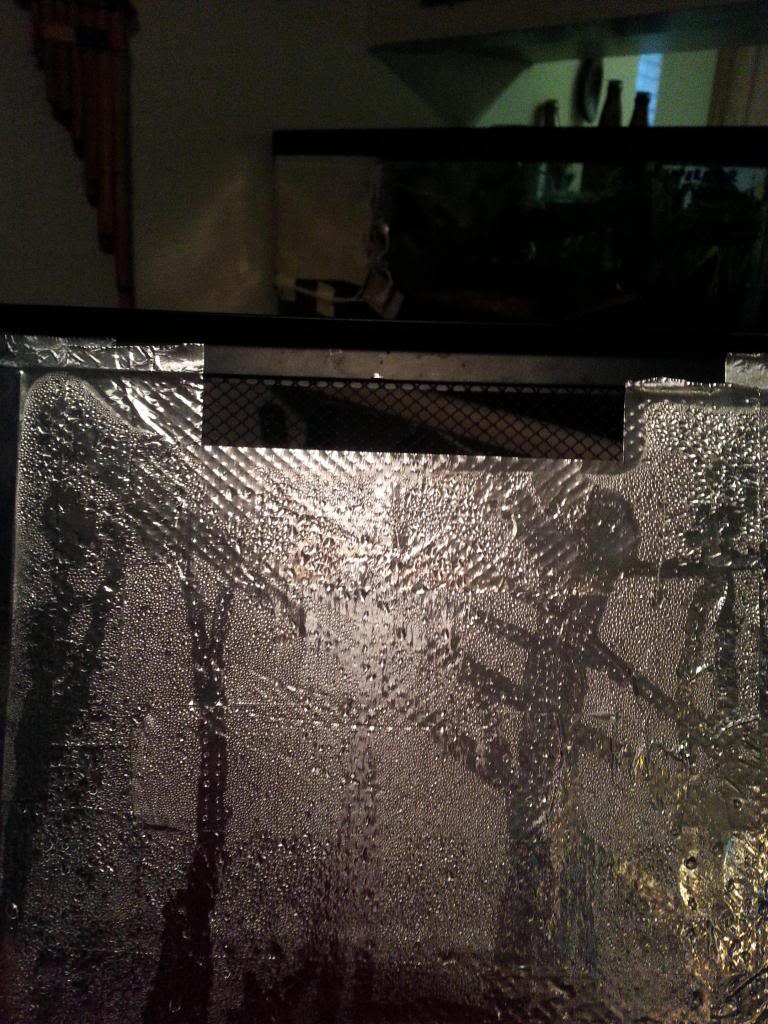
Condensation temporarily wiped off so you can see all the plants and everything in the setup.
